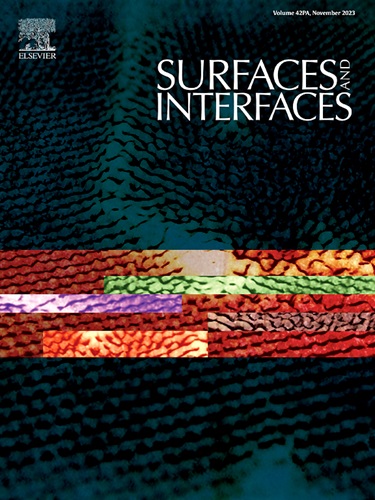Towards Water-based superlubricity by charged graphene surface in the boundary lubrication regime
IF 5.7
2区 材料科学
Q2 CHEMISTRY, PHYSICAL
引用次数: 0
Abstract
A new model of graphene friction pair consisting of charged and uncharged surfaces was proposed to achieve water-based superlubricity in the boundary lubrication regime, and molecular dynamics (MD) simulations were performed to reveal superlubricity mechanisms. It is found that the new model of graphene friction pair can significantly reduce the friction coefficient by two orders of magnitude to 10e-3 and thus achieves superlubricity for water as a lubricant. The existence of slip plane between the uncharged graphene substrate and water molecules due to the disappearance of π-H bonds contributes low friction. In addition, fluidity of hydration layers induced by the charged graphene and low energy dissipation due to hydrogen bonding forces also contribute superlubricity. An optimal value of surface charge exists for achieving superlubricity with the minimum friction coefficient. Effects of ion concentration (NaCl) on superlubrication were also studied. The friction coefficient decreases with the increase of ion concentration. The electrostatic force induced by the charged graphene and salt solution can form a state of electrostatic suspension under a large normal load, and the smooth hydration layer can result in a smaller energy barrier to reducing friction. The current study provides a new vision for hydrated boundary superlubrication.
边界润滑条件下石墨烯表面带电对水基超润滑的影响
提出了一种由带电和不带电表面组成的新型石墨烯摩擦副模型,以实现水基在边界润滑状态下的超润滑,并进行了分子动力学(MD)模拟来揭示超润滑机制。研究发现,新型石墨烯摩擦副可以将摩擦系数显著降低两个数量级至10e-3,从而实现以水为润滑剂的超润滑。由于π-H键的消失,不带电的石墨烯衬底与水分子之间存在滑动面,从而降低了摩擦。此外,由带电石墨烯引起的水化层的流动性和氢键力引起的低能量耗散也有助于超润滑。存在一个以最小摩擦系数实现超润滑的最佳表面电荷值。研究了离子浓度(NaCl)对超润滑性能的影响。摩擦系数随离子浓度的增加而减小。带电石墨烯与盐溶液产生的静电力在较大的法向载荷下可形成静电悬浮状态,光滑的水化层可形成较小的能垒以减小摩擦。本研究为研究水合边界超润滑提供了新的思路。
本文章由计算机程序翻译,如有差异,请以英文原文为准。
求助全文
约1分钟内获得全文
求助全文
来源期刊

Surfaces and Interfaces
Chemistry-General Chemistry
CiteScore
8.50
自引率
6.50%
发文量
753
审稿时长
35 days
期刊介绍:
The aim of the journal is to provide a respectful outlet for ''sound science'' papers in all research areas on surfaces and interfaces. We define sound science papers as papers that describe new and well-executed research, but that do not necessarily provide brand new insights or are merely a description of research results.
Surfaces and Interfaces publishes research papers in all fields of surface science which may not always find the right home on first submission to our Elsevier sister journals (Applied Surface, Surface and Coatings Technology, Thin Solid Films)
 求助内容:
求助内容: 应助结果提醒方式:
应助结果提醒方式:


